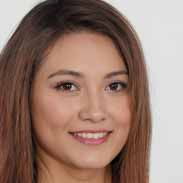Anatomy Chapter 10 – Flashcards
Unlock all answers in this set
Unlock answersquestion
fascicles
answer
bundles of muscle fibers
question
epimysium
answer
Connective tissue layer surrounding an individual muscle. Dense irregular.
question
perimysium
answer
Connective tissue surrounding a fascicle. Dense irregular
question
endomysium
answer
Connective tissue surrounding a muscle fiber. Areolar.
question
deep fascia
answer
an expansive sheet of dense irregular connective tissue that separates individual muscles, binds together muscles with similar functions, and forms sheaths to help distribute nerves, blood vessels, and lymphatic vessels, and to fill spaces between muscles. Also called visceral or muscular fascia.
question
superficial fascia
answer
also called subcutaneous layer, composed of areolar and adipose connective tissue that separates muscle from skin.
question
aponeurosis
answer
a thin, flattened sheet formed by a tendon.
question
axon
answer
nerve fiber. a motor neuron's long extension.
question
muscle fiber
answer
single muscle cell - metabolic activities, contraction
question
sarcolemma
answer
plasma membrane of a muscle fiber - surrounds muscle fiber and regulates entry and exit of materials
question
sarcoplasm
answer
cytoplasm of a muscle fiber - site of metabolic processes for normal muscle fiber activities
question
sarcoplasmic reticulum
answer
smooth endoplasmic reticulum in a muscle fiber - stores calcium ions needed for muscle contraction
question
terminal cisternae
answer
expanded ends of a sarcoplasmic reticulum that are in contact with the transverse tubules - site of calcium ion release to promote muscle contraction
question
transverse tubule (T-tubule)
answer
narrow, tubular extensions of the sarcolemma in to the sarcoplasm, contacting the terminal cisternae; wrapped around myofibrils - quickly transports a muscle impulse from the sarcolemma throughout the entire muscle fiber
question
myofibrils
answer
organized bundles of myofilaments; cylindrical structures as long as the muscle fiber itself - contain myofilaments that are responsible for muscle contraction
question
thick filament
answer
composed of bundles of myosin
question
thin filament
answer
composed of actin, troponin, and tropomyosin
question
actin
answer
double-stranded contractile protein - binding site for myosin to shorten a sarcomere
question
tropomyosin
answer
double-stranded regulatory protein - covers the active sites on actin, preventing myosin from binding to actin when muscle fiber is at rest
question
troponin
answer
regulatory protein that holds tropomyosin in place and anchors to actin - when calcium ions bind to one of its subunits, troponin changes shape, causing the tropomyosin to move off the actin active site, and this permits myosin binding to actin
question
titin
answer
filaments of an elastic protein - help return myofilaments to resting position after contaction; maintain positions of myofilaments in sarcomere
question
triad
answer
a structure made of two terminal cisternae and the centrally placed T-tubule
question
myoblasts
answer
groups of embryonic cells that fuse to form single skeletal muscle fibers
question
satellite cells
answer
embryonic-like cells that remain in skeletal muscle tissue that may be differentiated to aid in repair and regeneration
question
myofilaments
answer
bundles of short myofilaments combine to make myofibrils. bundles are classified as thick or thin filaments
question
crossbridges
answer
formed when myosin heads bind thick filaments to actin in the thin filaments during muscle contraction
question
z disc
answer
a thin transverse protein structure in the center of the i band that serves as an attachment site for thin filament ends.
question
sarcomere
answer
the functional contractile unit of a skeletal muscle fiber. distance between two z discs
question
neuromuscular junction
answer
the point where a motor neuron meets a skeletal muscle fiber
question
synaptic knob
answer
an expanded tip of an axon. when it nears the sarcolemma, it expands further to cover a relatively large surface area of the sarcolemma. a nerve impulse travels through the axon to the synaptic knob
question
synaptic vessicles
answer
small membrane sacs filled with molecules of the neurotransmitter acetylcholine (ACh) located in synaptic knob cytoplasm
question
motor end plate
answer
specialized region of the sarcolemma that has folds and indentations to increase the membrane surface area covered by the synaptic knob.
question
synaptic cleft
answer
narrow space separating the synaptic knob and the motor end plate
question
ACh receptors
answer
in motor end plate, act like doors that normally are closed. ACH is the only "key to open these receptor doors
question
acetylcholinesterase (AChE)
answer
resides in the synaptic cleft, rapidly breaks down molecules of ACh that are released into the synaptic cleft. It is needed so that ACh will not continuously stimulate the muscle.
question
motor unit
answer
composed of a single motor neuron and all of the muscle fibers it controls
question
all-or-none principle
answer
a muscle fiber either contracts completely or does not contract at all.
question
Myofibrils
answer
(smallest) bundles of thick and thin filaments which are covered by sarcoplasmic reticulum.
question
Skeletal muscle fibers
answer
(small) multinucleate, striated, and covered by endomysium.
question
Muscle fascicles
answer
(medium) bundles of muscle fibers which are covered by perimysium.
question
muscle trunk
answer
(big) bundle of fascicles and is covered by epimysium and fascia.
question
connective tissue of muscle
answer
bound firmly to the connective tissue of the tendon.



